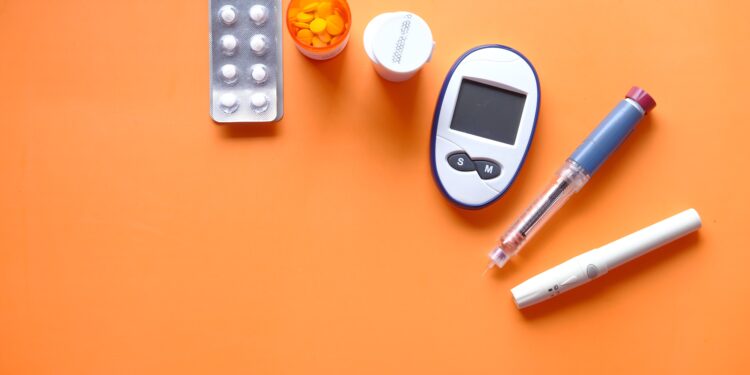Screening for Diabetes

Diabetes is a chronic disease that affects millions of people around the world. It is
characterised by high levels of glucose (sugar) in the blood, which can lead to a range of
health complications over time. Screening tests are an important tool for identifying diabetes
early and preventing or managing these complications. In this article, we will discuss the
different types of screening tests for diabetes patients. For the Fasting Plasma Glucose (FPG)
test, you will need to fast (not eat or drink anything except water) for at least 8 hours before
the test. This means you should not eat or drink anything other than water after dinner , the
night before the test. If you take medications, check with your healthcare provider to see if
you need to adjust your dose or timing.
- Fasting Plasma Glucose (FPG) Test
The FPG test is one of the most common screening tests for diabetes. It involves measuring
blood glucose levels after a patient has fasted (not eaten) for at least 8 hours. The American
Diabetes Association (ADA) recommends using an FPG test to diagnose diabetes if the
fasting blood glucose level is 126 mg/dL or higher on two separate occasions.
- Oral Glucose Tolerance Test (OGTT)
The OGTT is another screening test for diabetes that involves measuring blood glucose levels
after a patient drinks a sugary solution. The test is done after an overnight fast, and blood
glucose levels are measured at regular intervals over the course of two hours. The ADA
recommends using an OGTT to diagnose diabetes if the blood glucose level is 200 mg/dL or
higher, two hours after drinking the solution. For the OGTT, you will need to fast for at least
8 hours before the test. On the morning of the test, you will drink a sugary solution, and
blood glucose levels will be measured at regular intervals over the course of two hours. It is
important to avoid strenuous exercise and to stay hydrated during this time.
- Haemoglobin A1C (HbA1c) Test
The HbA1c test measures the percentage of hemoglobin (a protein in red blood cells) that has
glucose attached to it. This test provides an average blood glucose level over the past 2-3
months and does not require fasting. The ADA recommends using an HbA1c test to diagnose
diabetes if the result is 6.5% or higher. No special preparation is needed for the HbA1c test.
You do not need to fast, and you can take your medications as usual.
- Random Plasma Glucose Test
The random plasma glucose test is a screening test for diabetes that involves measuring blood
glucose levels at any time of the day, regardless of when the patient last ate. The ADA
recommends using this test to diagnose diabetes if the blood glucose level is 200 mg/dL or
higher and the patient has symptoms of diabetes, such as increased thirst or urination. No
special preparation is needed for the random plasma glucose test. You do not need to fast, but
you should avoid eating or drinking anything sweet right before the test.
- Urine Tests
Urine tests can also be used to screen for diabetes. These tests measure the amount of glucose
in the urine, which can indicate high blood glucose levels. However, urine tests are not as
accurate as blood tests and are generally not recommended for diagnosing diabetes.
It is important to note that screening tests are not perfect and may give false positive or false
negative results. Therefore, a diagnosis of diabetes should always be confirmed with a
follow-up test. If you are asked to provide a urine sample for a diabetes screening test, you
should follow any instructions provided by your healthcare provider. In general, you may be
asked to refrain from eating or drinking anything for a few hours before the test to ensure an
accurate result.
Gestational diabetes mellitus (GDM)
Gestational diabetes mellitus (GDM) is a type of diabetes that develops during pregnancy.
Screening for GDM is important because it can lead to health problems for both the mother
and the baby if left untreated. In this article, we will discuss the different screening tests for
GDM.
- Glucose Challenge Test (GCT)
The GCT is a screening test for GDM that involves drinking a sugary solution and having
blood drawn one hour later to measure blood glucose levels. The American College of
Obstetricians and Gynecologists (ACOG) recommends that all pregnant women be screened
for GDM with a GCT at 24-28 weeks of gestation. If the blood glucose level is high
(typically 130-140 mg/dL or higher), a follow-up test called the oral glucose tolerance test
(OGTT) is usually recommended.
- Oral Glucose Tolerance Test (OGTT)
The OGTT is a diagnostic test for GDM that involves drinking a larger sugary solution and
having blood drawn at regular intervals over the course of three hours to measure blood
glucose levels. The ACOG recommends using the following diagnostic criteria for GDM:
Fasting blood glucose level: 92 mg/dL or higher
One-hour blood glucose level: 180 mg/dL or higher
Two-hour blood glucose level: 153 mg/dL or higher
Three-hour blood glucose level: 140 mg/dL or higher
If two or more of these values are met or exceeded, a diagnosis of GDM is usually made.
- Glycated Hemoglobin (HbA1c) Test
The HbA1c test measures the percentage of hemoglobin (a protein in red blood cells) that has
glucose attached to it. This test provides an average blood glucose level over the past 2-3
months and can be used to screen for GDM in women with risk factors for diabetes, such as
obesity or a family history of diabetes. However, the HbA1c test is not recommended as the
primary screening test for GDM.
It is important to note that some women may need to be screened for GDM earlier in
pregnancy or more frequently if they have certain risk factors, such as a previous history of
GDM, obesity, or a family history of diabetes. Additionally, if a woman has symptoms of
diabetes, such as increased thirst or urination, she should be screened for GDM regardless of
her stage of pregnancy.
In conclusion, screening for GDM is an important part of prenatal care. The glucose
challenge test and oral glucose tolerance test are the most common screening tests for GDM,
while the HbA1c test is generally used to screen for diabetes risk factors. Women with risk
factors for GDM may need to be screened earlier or more frequently, and women with
symptoms of diabetes should be screened regardless of their stage of pregnancy.
In addition to these general tips, it is important to follow any specific instructions provided by
your healthcare provider. This may include instructions on when to stop taking certain
medications, what to eat or drink before the test, and how to collect a urine sample. If you
have any questions or concerns about how to prepare for a diabetes screening test, be sure to
talk to your healthcare provider.
In addition to screening tests, there are also risk factors that can increase a person's likelihood
of developing diabetes. These include:
- Age 45 or older
- Overweight or obesity
- Family history of diabetes
- Sedentary lifestyle
- High blood pressure
- High cholesterol
- History of gestational diabetes (diabetes during pregnancy)
If a patient has one or more of these risk factors, they should be screened for diabetes more
frequently and at an earlier age than patients without these risk factors.
In conclusion, screening tests for diabetes are an important tool for identifying the disease
early and preventing or managing its complications. The most common screening tests
include the fasting plasma glucose test, oral glucose tolerance test, hemoglobin A1C test, and
random plasma glucose test. Urine tests can also be used, but they are not as accurate as
blood tests. It is important to note that a diagnosis of diabetes should always be confirmed
with a follow-up test, and patients with risk factors should be screened more frequently and at
an earlier age.
Dr. Minollie Suzanne Silva






